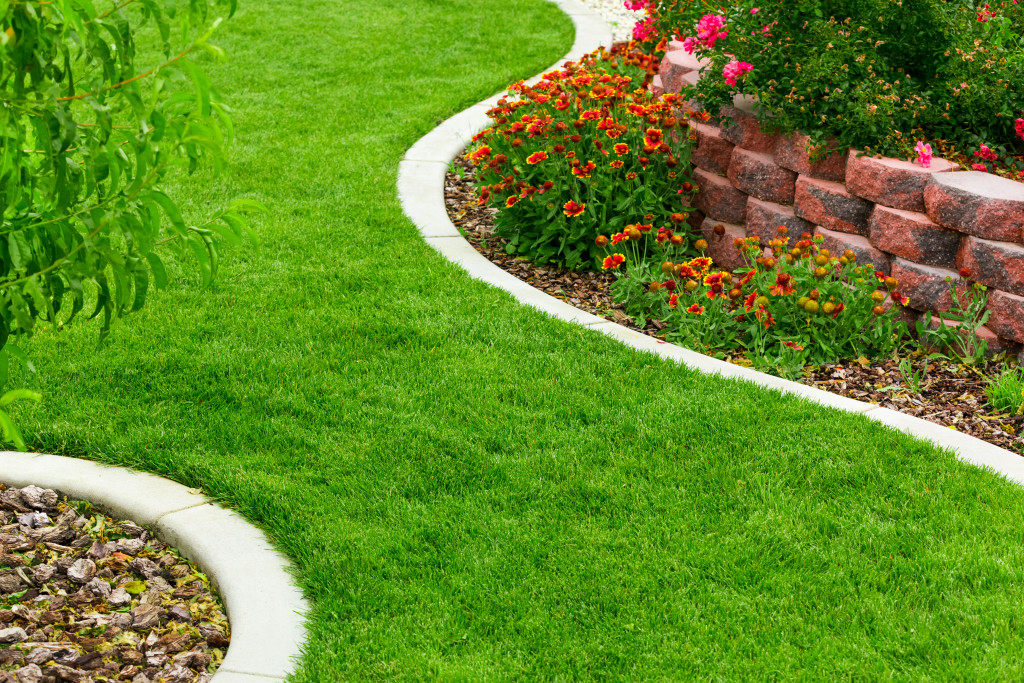Many families gather for quality time and fun activities in the American backyard. It’s where they relax after a long day or week and where they celebrate holidays and special occasions. But, while the backyard may seem like a simple space, a lot of work goes into keeping it looking nice and functioning properly.
People usually build gardens to make their backyard look more attractive. However, it can be fun to plan and design your garden and then watch it grow over time. Gardening is also a great way to get some exercise and fresh air.
However, if you have pets, you need to be careful about how you design your garden. Your garden and pets might be some of the best things in your life, but they usually don’t go well together. Here’s how you can keep your garden and pets safe from each other.
Choose the right plants
When planning your garden, take some time to research which plants are safe for pets. Some plants are poisonous to animals, so choosing ones that won’t harm your pet if they eat them is essential. Here are some dangerous plants to animals and what they can do to them:
- Lilies — These flowers are beautiful, but they’re also very dangerous to cats. If a cat eats even a small amount of lily, it can cause kidney failure.
- Iris — Iris plants can cause stomach irritation and vomiting in dogs.
- Rhododendron — This plant can cause dogs vomiting, diarrhea, and seizures.
- Sago palms — These plants are poisonous to both dogs and cats. Eating just a small amount of the plant can cause liver failure.
If you have pets, it’s best to avoid these plants altogether. There are plenty of other options that are safe for animals. Talk to your veterinarian or a local nursery to determine which plants are best for your area.

Create a barrier
One way to keep your pets out of your garden is to create a physical barrier between the two areas. There are many ways to do this, such as installing a fence.
Fence
Installing a fence can be a bit of a hassle, but it’s worth it if it means keeping your pets safe. You can choose from various fence materials such as wood, chain link, and vinyl. Just make sure the fence is tall enough that your pet can’t jump over it.
Raise your garden beds
Another way to create a barrier between your garden and pets is to raise your garden beds. This will make it more difficult for animals to get into your plants. You can build raised beds out of wood, stone, or brick.
Use netting
If you have smaller pets, you can use netting to keep them out of your garden. Just make sure the netting is sturdy and won’t tear if your pet tries to go through it. You can find netting at most hardware stores.
Be careful with pesticides
Pesticides can be hazardous to animals, so using them sparingly in your garden is essential. If you must use pesticides, choose ones that are safe for pets and follow the directions carefully.
Never use rat poison in your garden. It’s very harmful to animals, and it can even be deadly. Also, keep your pets away from the garden when you’re using pesticides. Wait until the pesticide has dried before letting your pet into the area.
Teach your pet not to go into the garden
The best way to keep your pet out of your garden is to train them not to go into it. This might take some time and patience, but it’s worth it. Here are a few tips for training your pet:
- Use positive reinforcement such as treats or praise when your pet stays out of the garden.
- Put up a barrier such as a fence or netting to keep your pet out of the garden.
- Use negative reinforcement such as scolding or spraying your pet with water if they try to go into the garden.
- Be consistent with your training. For example, if you allow your pet into the garden sometimes, they’ll never learn to stay out.
You can train your pet to stay out of the garden with some time and patience. But if you don’t have the time for it, consider hiring a professional or enrolling them in a program. There are many robust obedience training programs in a dog training school. These programs cover even puppies who are 8-10 weeks old.
As you can see, there are many ways to keep your pets out of your garden. For example, you can install a fence, raise your garden beds, or use netting. You can also train your pet not to go into the garden. If you have any questions or need help to get started, talk to your veterinarian or local nursery. They’ll be able to help you find the best solution for your situation.

